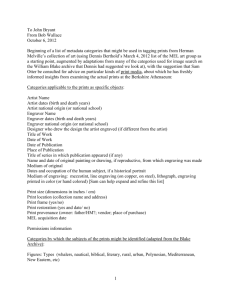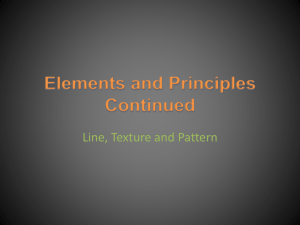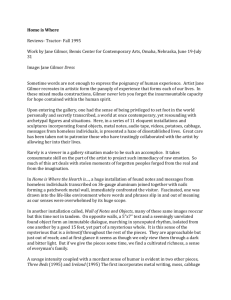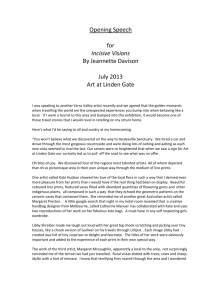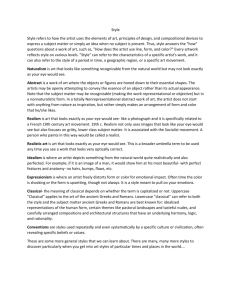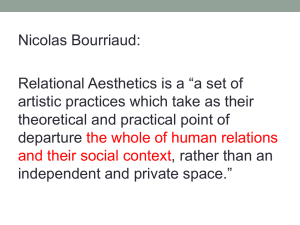Catalogue, The Usurpers Habit 1999
advertisement
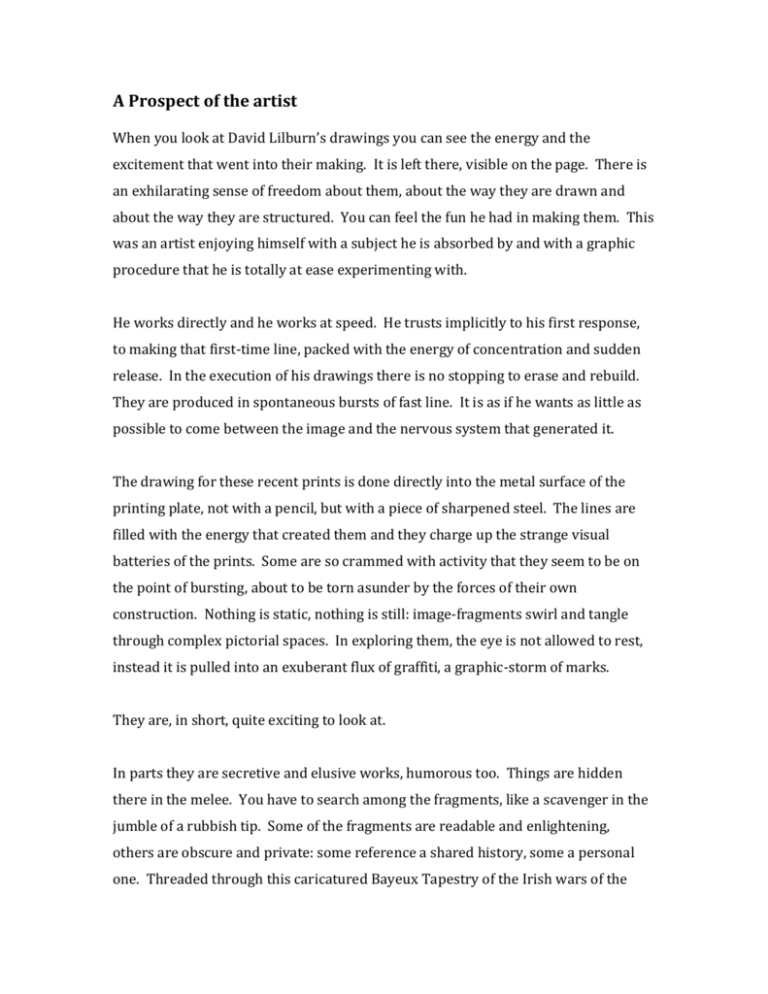
A Prospect of the artist When you look at David Lilburn’s drawings you can see the energy and the excitement that went into their making. It is left there, visible on the page. There is an exhilarating sense of freedom about them, about the way they are drawn and about the way they are structured. You can feel the fun he had in making them. This was an artist enjoying himself with a subject he is absorbed by and with a graphic procedure that he is totally at ease experimenting with. He works directly and he works at speed. He trusts implicitly to his first response, to making that first-time line, packed with the energy of concentration and sudden release. In the execution of his drawings there is no stopping to erase and rebuild. They are produced in spontaneous bursts of fast line. It is as if he wants as little as possible to come between the image and the nervous system that generated it. The drawing for these recent prints is done directly into the metal surface of the printing plate, not with a pencil, but with a piece of sharpened steel. The lines are filled with the energy that created them and they charge up the strange visual batteries of the prints. Some are so crammed with activity that they seem to be on the point of bursting, about to be torn asunder by the forces of their own construction. Nothing is static, nothing is still: image-fragments swirl and tangle through complex pictorial spaces. In exploring them, the eye is not allowed to rest, instead it is pulled into an exuberant flux of graffiti, a graphic-storm of marks. They are, in short, quite exciting to look at. In parts they are secretive and elusive works, humorous too. Things are hidden there in the melee. You have to search among the fragments, like a scavenger in the jumble of a rubbish tip. Some of the fragments are readable and enlightening, others are obscure and private: some reference a shared history, some a personal one. Threaded through this caricatured Bayeux Tapestry of the Irish wars of the seventeenth century is a personal identity having to swim in the flotsam of that history. We are always aware of the artist's presence, even if he is not literally there in person all the time. In David Lilburn’s work the idea of the extended self-portrait is never very far beneath the surface. The visual forms of the diagram and the map have been used by the artist as the starting points for a number of these images, so it is perhaps not surprising to discover that an existing map of Limerick was the initial stimulus for one of the larger prints in the exhibition. It was a map that represented the first siege of the city by Williamite forces in 1690 and it was published in London in 1693 by G Story. It is memorable visually in that it experiments with pictorial space by combining in the one image a plan view of the siege and a panoramic, ‘postcard view’ of all the buildings in the city. It is titled: ‘A Prospect of Limerick’. Some three hundred years later it has been reincarnated. In the new map, however, the artist has re-invented the original to his own ends: pushing the spatial manoeuvrings of the first to their furthest extreme and then filling it to the brim with an arsenal of historical [and some present-day] imagery. It is an intriguing collage of tangled fragments of drawing. But, whereas in the original map its maker stands godlike on the outside of the image, trying to clarify the events for the viewer, in the new one the mapmaking artist, is engulfed in the paraphernalia of his own map. As he peeps out at us through the debris of his image-fragments, he is adrift in the currents of his own and the city’s history. These are rich drawings, full of excitement and surprises, produced by someone who is engrossed in his subject-matter and who explores it with a visual passion and wit. He offers you his maps, not to find your way by, but to get thoroughly and enjoyably lost in. Jim Savage



